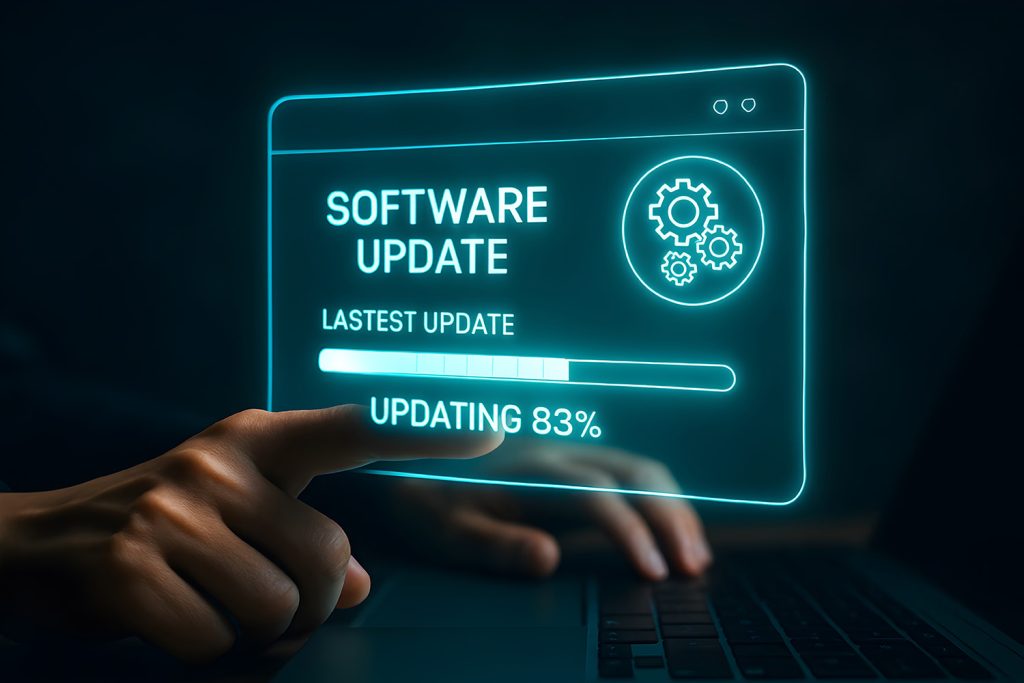Is your business still running on Windows 10? If so, picture this: you’re driving a dependable car that suddenly stops qualifying for safety recalls. It runs fine until one day, the brakes fail. That’s what happens when outdated systems like Windows 10 reach end-of-life. Security updates stop, leaving systems exposed to attackers who know exactly where the vulnerabilities are.
Here’s the real question: if your systems were tested tomorrow, would they hold up, or would outdated software put you at risk?.
Why Do Outdated Systems Become Cybersecurity Time Bombs?
Thousands of small businesses have already faced attacks traced back to one forgotten device or outdated laptop. These aren’t high-profile corporations—they’re local medical offices, accounting firms, and retail shops that simply postponed upgrades “until next quarter.”
Running outdated software or unsupported operating systems is one of the most common causes of modern cyberattacks. When access to regular updates is cut off, your devices become open invitations for malware, ransomware, and unauthorized access.
Many real cyberattack stories involve a small team doing big work, only to be taken down by something as simple as an unpatched Windows machine. These stories aren’t headlines from Fortune 500 companies. Rather, they’re mostly local shops, medical offices, and family-run businesses that thought they were too small to be targeted.
Once hackers find one vulnerable endpoint—take note, it only takes one—they can often move laterally through your network, steal data, and demand ransoms. No matter how strong your firewall or antivirus may be, they won’t protect you from known exploits that your OS no longer patches.
What Happens When Businesses Delay Critical System Upgrades?
Let’s talk about what happens behind the scenes.
We’ve seen cases where a business got hacked due to outdated software on just a single machine. One small marketing agency left an unused laptop in a shared office space, still running Windows 7 long after support ended. A simple phishing email targeted that system, and because it wasn’t updated or monitored, the attacker gained network access within minutes.
They ended up losing weeks of productivity, customer trust, and thousands in recovery costs.
These cybersecurity case studies are becoming increasingly common and will likely spike as we approach the Windows 10 deadline. Once attackers know that millions of systems won’t be upgraded in time, they’ll turn their attention to those easy targets.
What Are the Main Windows 10 End-of-Life Cybersecurity Risks?
Very simply put, here’s what’s at stake when support for Windows 10 officially ends:
- No more security updates or patches
- No support from Microsoft for bugs or vulnerabilities
- Increased risk of ransomware, malware, and data breaches
- Non-compliance with industry regulations
That’s why Windows 10 end-of-life cybersecurity risks should be on every business owner’s radar today, not next month, not next year. Delaying now could mean disaster later.
How Do MSPs Help Small Businesses Stay Secure During System Upgrades?
This is where a managed service provider steps in. Are you unsure of how to prepare? Do you have your IT team, but they’re stretched thin? Either way, MSPs can manage the transition for you without disrupting your operations.
Here’s how they help:
- Endpoint security for small businesses—ensure every device is protected, patched, and monitored.
- Managed Detection and Response (MDR)—Round-the-clock monitoring that detects suspicious activity in real-time, so nothing slips through the cracks.
- Upgrade to Windows 11 security—MSPs help you assess hardware compatibility, create a rollout plan, and implement upgrades safely.
Most importantly, they do this before something goes wrong, not when things are already falling apart.
How Can You Protect Your Business Before Windows 10 End-of-Life?
The threat isn’t theoretical—it’s happening all the time. And with the Windows 10 end-of-life cybersecurity risks drawing closer, the timeline for action is shrinking.
Before Windows 10 support officially ends, take a few minutes to see where your business stands. A complimentary Dark Web Scan can reveal if your employee logins or business data are already exposed online.
Once you know what’s out there, our team can help you plan your Windows 10 migration and secure any weak spots before October 2025.
The question isn’t whether you’ll upgrade; it’s whether you’ll do it before or after a breach


